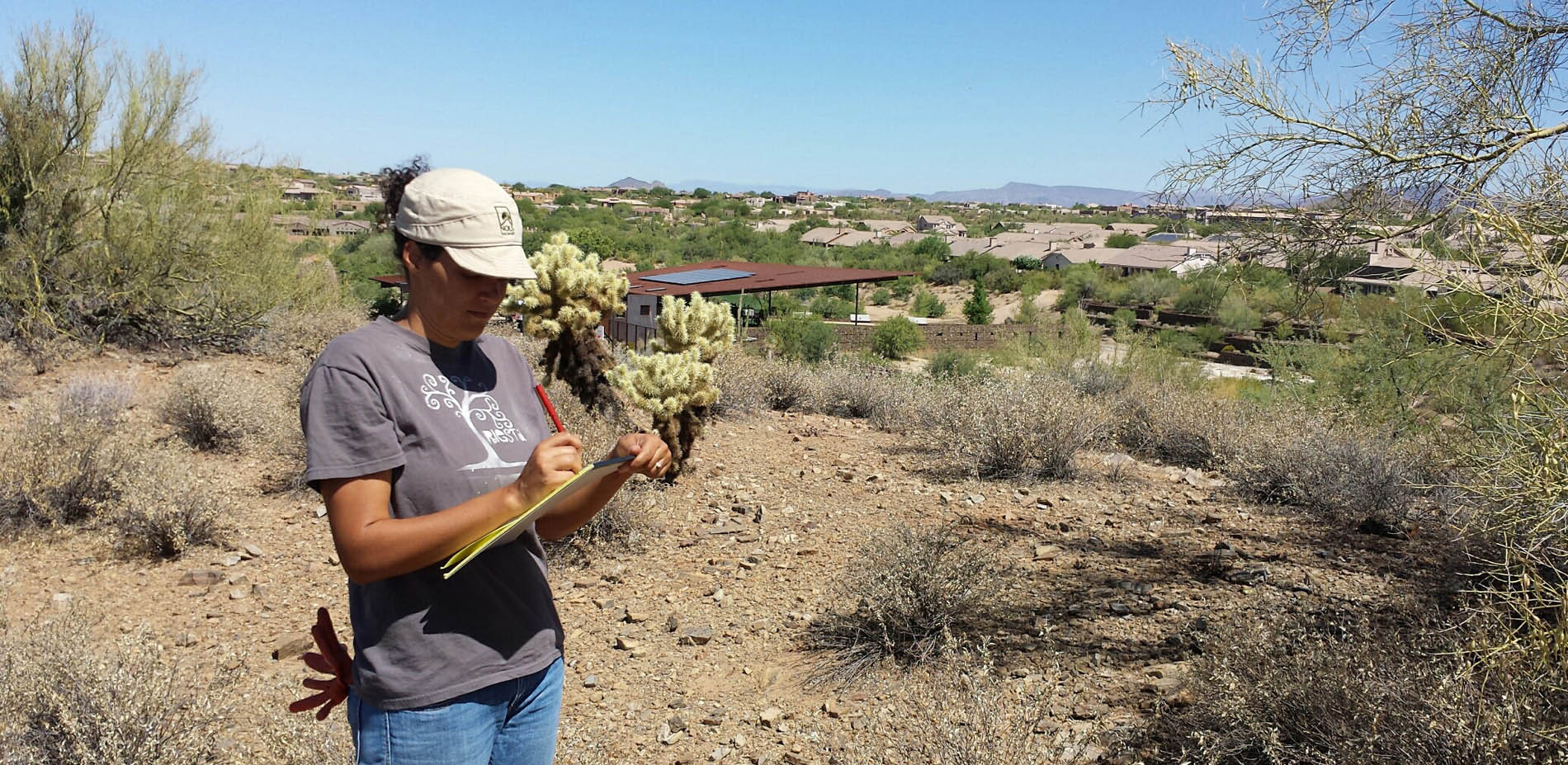
A 2014 Research Assistant records site observations at George “Doc” Cavalliere Park in Scottsdale, Arizona.
Photo Credit: Landscape Architecture Foundation (Chris Martin, CSI 2014)
Media: Please submit high-resolution image requests to images@asla.org.
2014 Research Assistants interview survey participants on-site at the Atlanta Beltline Eastside Trail.
Photo Credit: Landscape Architecture Foundation
Media: Please submit high-resolution image requests to images@asla.org.
A 2013 CSI Research Assistant tests water quality on site at Watch Factory in Waltham, Massachusetts.
Photo Credit: Landscape Architecture Foundation
Media: Please submit high-resolution image requests to images@asla.org.
2013 CSI faculty Research Fellow and student Research Assistants review site plans and discuss their data collection strategy.
Photo Credit: University of Texas at Arlington
Media: Please submit high-resolution image requests to images@asla.org.
A 2013 CSI Research Assistant measures air temperature as part of a bioclimatic analysis on a high-altitude residential site in Pitkin County, Colorado.
Photo Credit: Landscape Architecture Foundation
Media: Please submit high-resolution image requests to images@asla.org.
2013 CSI academic researchers conduct surveys in Dallas’ Klyde Warren Park to gauge users’ perceptions of the park.
Photo Credit: Landscape Architecture Foundation
Media: Please submit high-resolution image requests to images@asla.org.
2012 CSI academic researchers meet with a firm liaison to discuss the Castiglion Del Bosco project in Montalcino, Italy.
Photo Credit: Landscape Architecture Foundation
Media: Please submit high-resolution image requests to images@asla.org.
A 2012 CSI Research Assistant records observations at The Avenue, a mixed-use, transit-oriented development in Washington D.C.
Photo Credit: Landscape Architecture Foundation
Media: Please submit high-resolution image requests to images@asla.org.
A 2012 CSI Research Assistant measures temperatures in The Avenue’s interior courtyard in Washington D.C.
Photo Credit: Landscape Architecture Foundation
Media: Please submit high-resolution image requests to images@asla.org.
A 2012 CSI research team collects irrigation data at the Frontier Project in Rancho Cucamonga, California.
Photo Credit: Landscape Architecture Foundation
Media: Please submit high-resolution image requests to images@asla.org.
A 2012 firm liaison collects water samples from Cross Creek Ranch in Fulshear, Texas.
Photo Credit: Landscape Architecture Foundation
Media: Please submit high-resolution image requests to images@asla.org.
A 2012 CSI Research Assistant collects water samples from Cross Creek Ranch in Fulshear, Texas.
Photo Credit: Landscape Architecture Foundation
Media: Please submit high-resolution image requests to images@asla.org.
Excerpt from Renaissance Park case study with quantified performance benefits.
Photo Credit: Landscape Architecture Foundation
Media: Please submit high-resolution image requests to images@asla.org.
Excerpt from Renaissance Park case study Methods document, which shows how the performance benefits were derived.
Photo Credit: Landscape Architecture Foundation
Media: Please submit high-resolution image requests to images@asla.org.

















